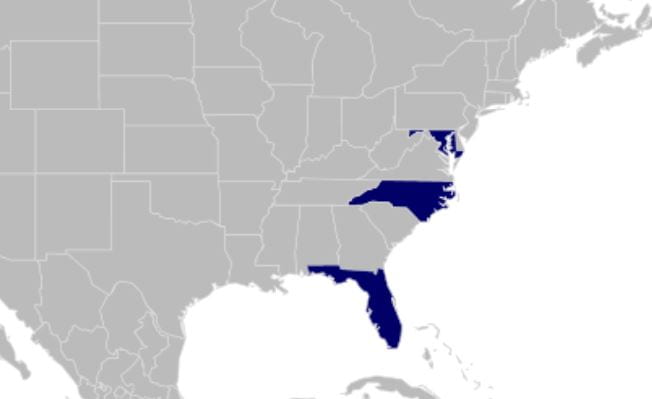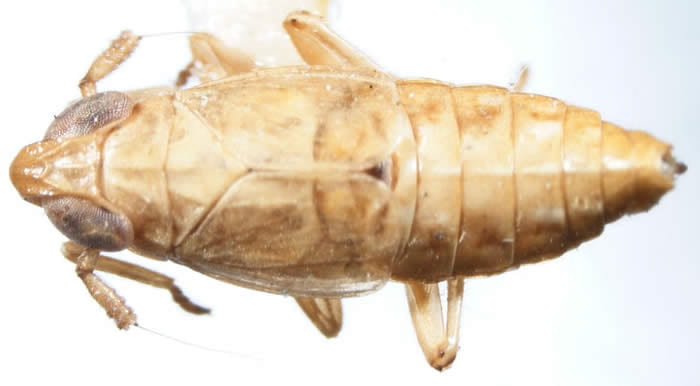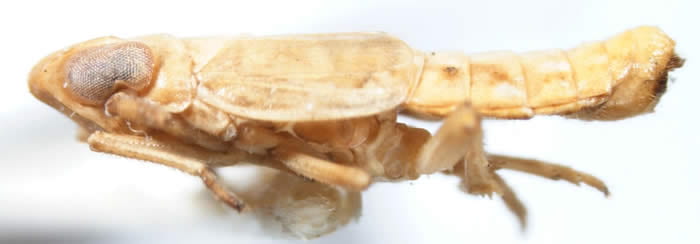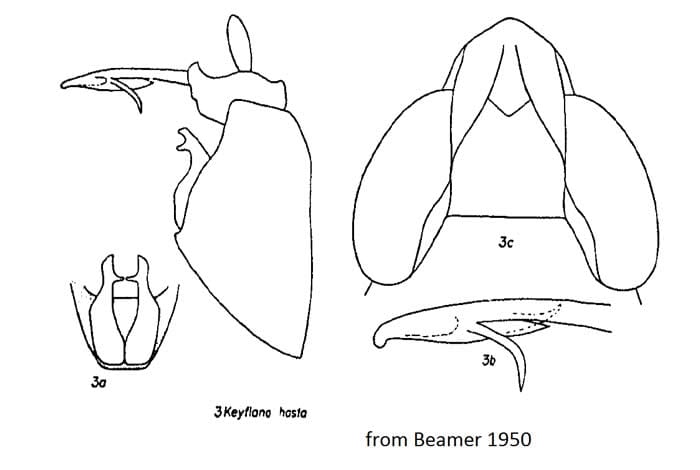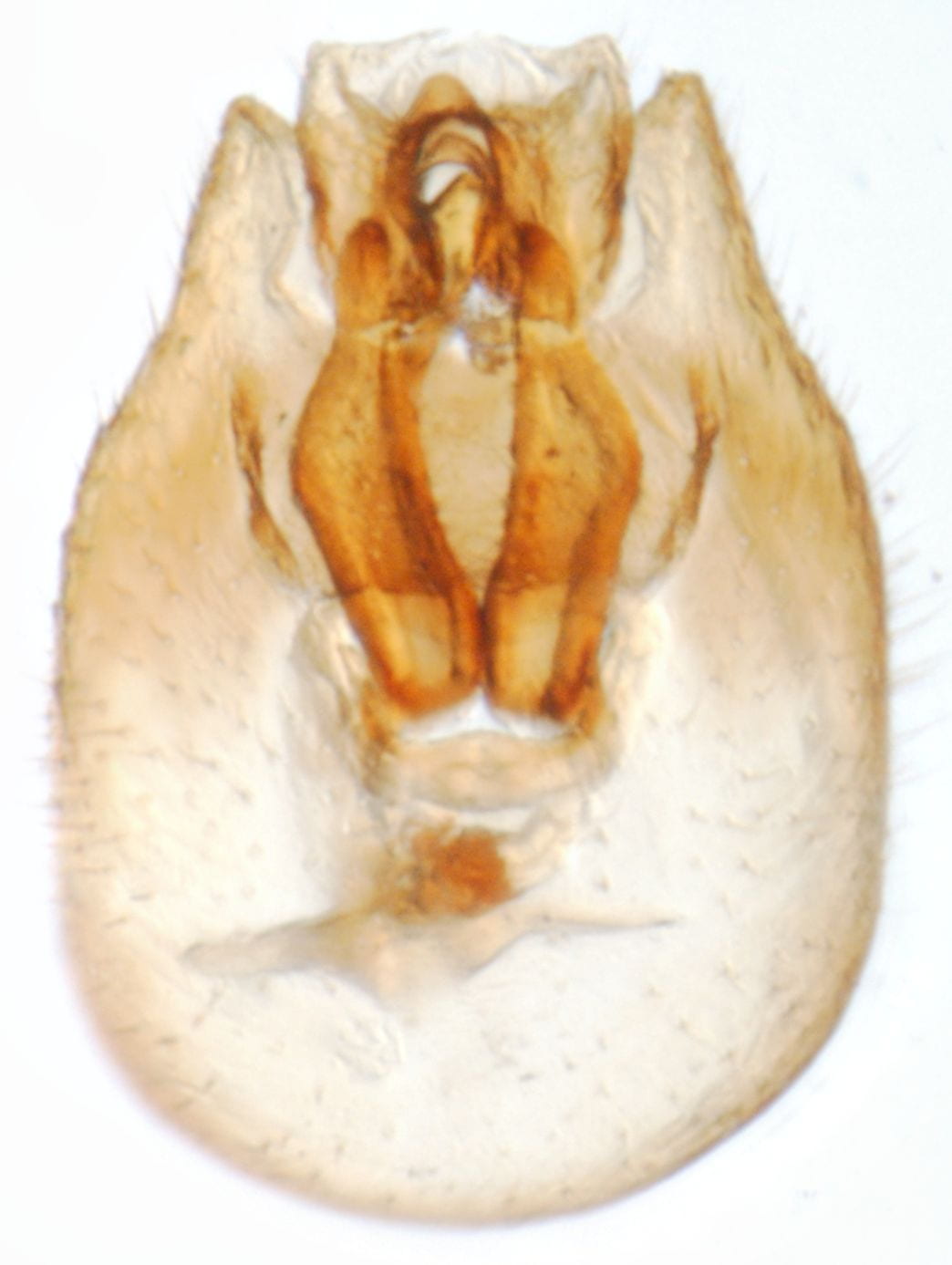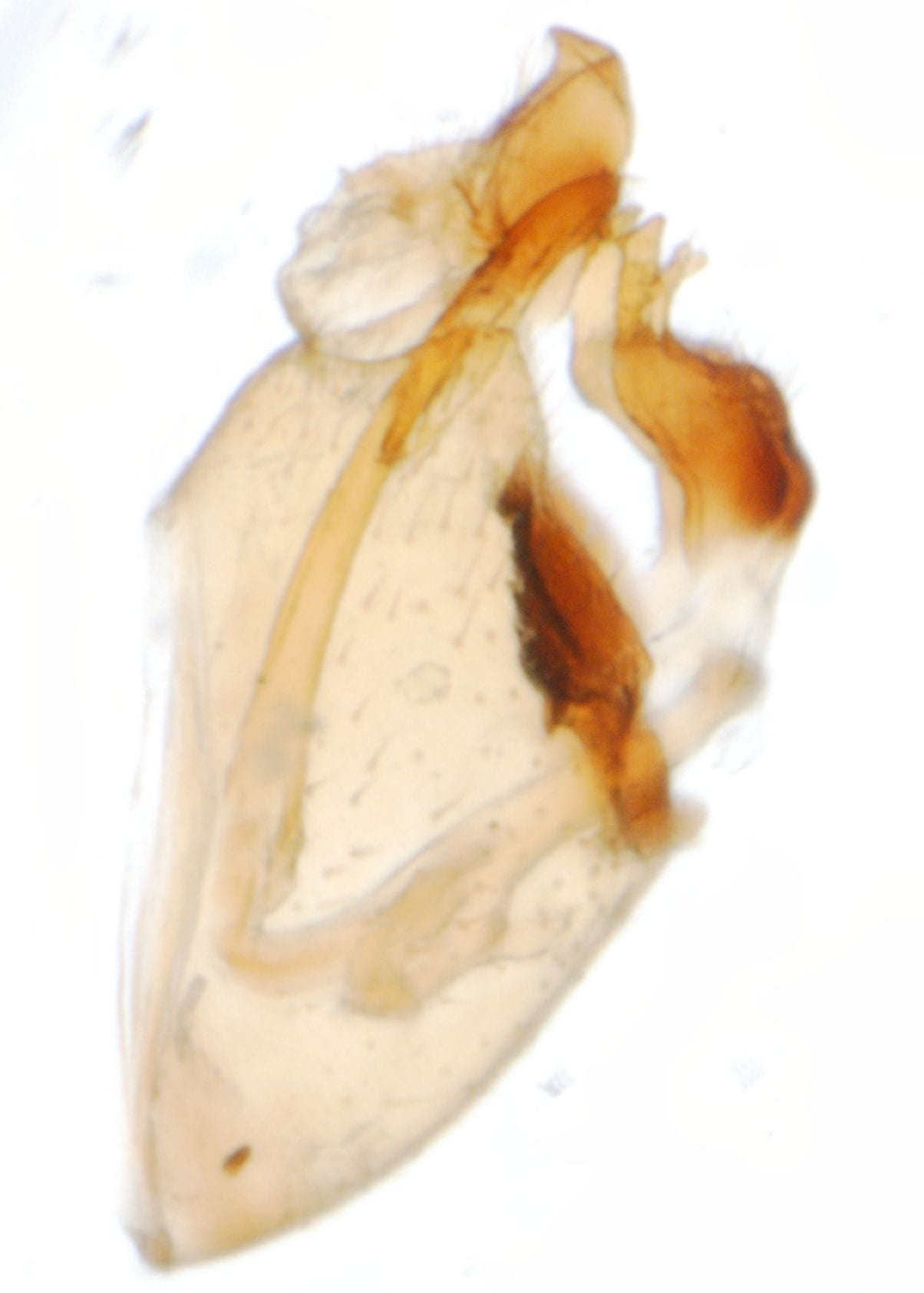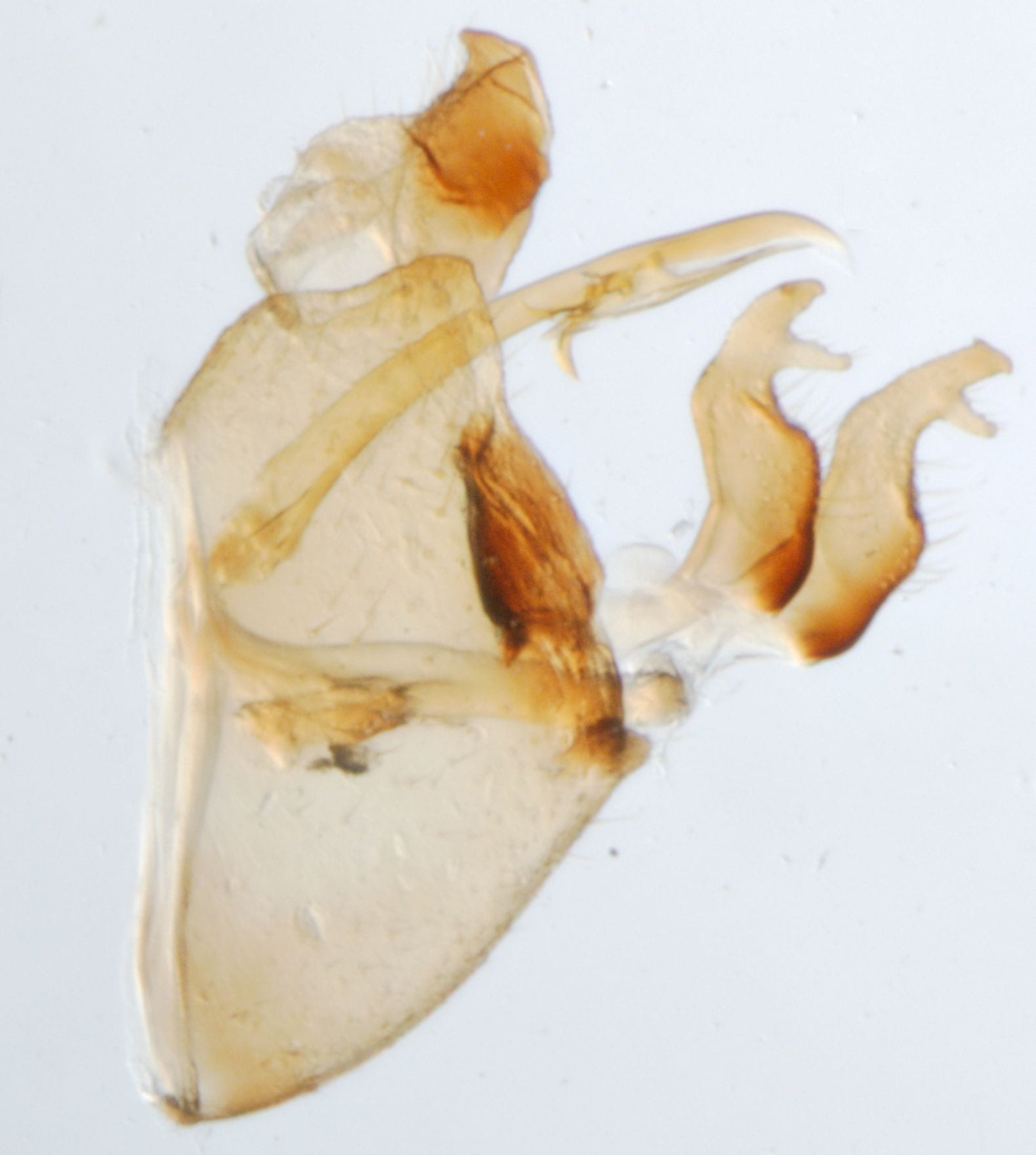[Back to Higher classification of Delphacidae]
Contents
Family Delphacidae Leach, 1815
Subfamily Delphacinae Leach, 1815
Tribe Delphacini Leach, 1815
Genus Keyflana Beamer, 1950: 131.
Type species: Keyflana hasta Beamer, 1950
Synonyms: None.
Distribution
USA: Florida, Maryland, North Carolina; I have specimens from South Carolina (coastal, probably synpatric with blackrush in Eastern USA)
Types: Holotype, allotype, paratypes, Cedar Keys, Fla., March 3, 1947; other paratypes: same July 12, 1939, Aug. 10, 1939, Yankeetown, Fla., March 3, 1947. Types in Snow Entomological Collections.
Recognized species
Only one species is in this genus:
Keyflana hasta Beamer, 1950: 131- USA: Florida, Louisiana, Maryland, North Carolina.
Plant associations
Blackrush (Juncus roemerianus Scheele; Juncaceae).
Host reported in Davis & Gray (1966), Denno et al. (1991), Sokolov et al. (2018). Plant names from USDA PLANTS.
Economic Importance
Limited. This species is infrequently encountered, but this is probably a result of the difficulty in sampling blackrush. A vacuum sampler may be the only effective method.
Recognition
Rather unique strongly flattened, stramineous species.
Comments and description from Beamer (1950) (editorial comment in square brackets, may be uncorrected OCR errors)
Runs to Neomalaxa in Muir and Giffard’s key ([1924] Studies in North American Delphacidae) but does not have a long and narrow crown. Head considerably narrower than greatest body width; apex of abdomen quite narrowed from sides and venter. Second segment of antennae about one-third longer than first; clypeus widest on apical third, tricarinate; crown almost flat, about one-third longer than basal width, sides slightly constricted near base. apex rather pointed, extending more than one-fourth its length in
front of eyes. Pronotum with three carinae, lateral almost straight, not reaching hind margin. Type of the genus Keyflana hasta n. sp.
Keyflana hasta n. sp.
Brachypterous form:
Structure: Clypeus about twice as long as wide, widest on apical third, narrowed to apex and much more so to base, definitely tricarinate, median carina very broad. Elytra [tegmina] barely longer than wide, semihyaline, veins raised, apices truncate; abdomen with dorsal median carina and a semblance of lateral rows of pustules. Length [male] 3.5 mm., [female] 4.5 mm.
Color: General color stramineous, some specimens light brown, abdomen often with darker areas.
Genitalia: In lateral view: pygofer rather trapezoidal, with posterior margin sinuate and dorsal margin about half as long as ventral; anal segment very broad and short with posterior upper corner produced in a pair of broad flaps; aedeagus very long and slender, curving ventrad with three long, retrorse processes on ventral margin near apex; styles widest at base, narrowing rapidly on caudal margin near middle to bifid apices. In caudal
view: styles widest on basal half, outer margin rapidly ,narrowing near. middle to half basal width to end in rounded apices with narrow finger-like process on inner margin before apex; aedeagal process broadly excavated, not produced dorsally.”
Keyflana hasta (male)
Online resources
Keyflana on…
EOL
FLOW
Discover Life
GBIF
Bugguide (N/A – this genus not on Bugguide)
3I Interactive Keys and Taxonomic Databases (Dmitry Dmitriev)
Hemipterans of North Carolina
Molecular Resources
None (not on Genbank or Barcode of Life as of Sept. 2018).
Collecting
This species can be found by vacuum sampling blackrush (it is too hard to sweep or beat this plant).
Selected References
Barringer, L. E. and C. R. Bartlett. 2018. Pennsylvania planthoppers (Hemiptera: Auchenorrhyncha: Fulgoroidea): relative abundance and incidental catch using novel trapping methods. Insecta Mundi 0661: 1–31.
Bartlett, C. R., L. B. O’Brien and S. W. Wilson. 2014. A review of the planthoppers (Hemiptera: Fulgoroidea) of the United States. Memoirs of the American Entomological Society 50: 1-287.
Beamer, R. H. 1950. Five new genera of delphacine fulgorids (Homoptera – Fulgoridae – Delphacinae). Journal of the Kansas Entomological Society 23(4): 128-133.
Davis, L. V. and I. E. Gray. 1966. Zonal and seasonal distribution of insects in North Carolina salt marshes. Ecological Monographs 36: 275-295.
Denno, R. F., G. K. Roderick and K. L. Olmstead. 1991. Density-related migration in planthoppers (Homoptera: Delphacidae): the role of habitat persistence. American Naturalist 138: 1513-1541.
Kennedy A. C., C. R. Bartlett and S. W. Wilson. 2012. An annotated checklist of the delphacid planthoppers (Hemiptera: Delphacidae) of Florida with the description of three new species and the new genus, Meristopsis. Florida Entomologist 95(2): 395-421.
Leach, W. E. 1815a. Entomology. The Edinburg encyclopedia; conducted by David Brewster 9: 57-172. (family Delphacidae here).
McCoy, E. D. and J. R. Rey. 1981. Patterns of abundance, distribution, and alary polymorphism among the salt marsh Delphacidae (Homoptera: Fulgoroidea) of northwest Florida. Ecological Entomology 6(3): 285-291.
Muir, F.A.G. and W. M. Giffard. 1924a. Studies in North American Delphacidae. Bulletin of the Experiment Station of the Hawaiian Sugar Planters’ Association, Entomological series no. 15: 1-53.
Sokolov, I., X. Chen, R. M. Strecker and L. M. Hooper-Bùi. 2018. An annotated list of Auchenorrhyncha and Heteroptera collected in the coastal salt marshes of the Mississippi Delta in Louisiana. Psyche 2018. 1-16. DOI: 10.1155/2018/1808370.
(not listed in Wilson et al 1994)

